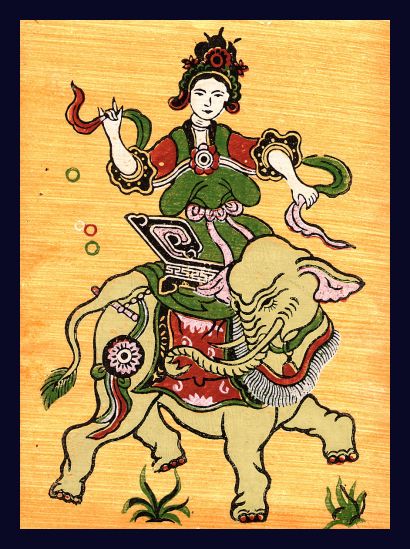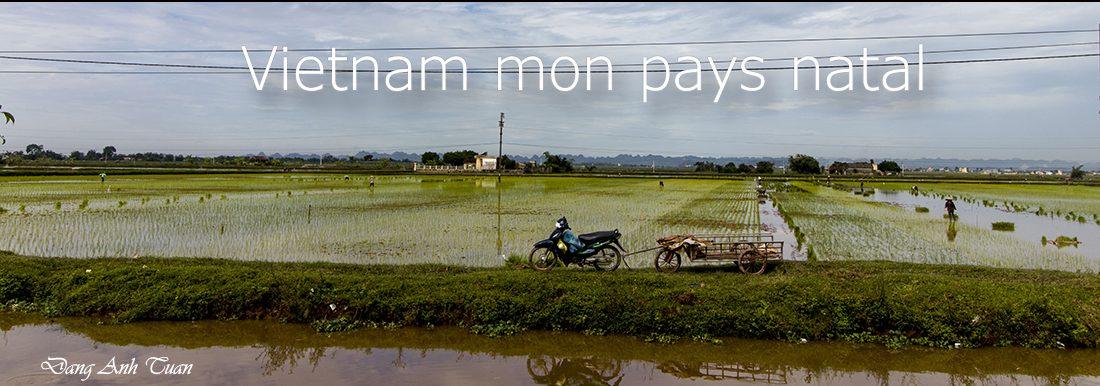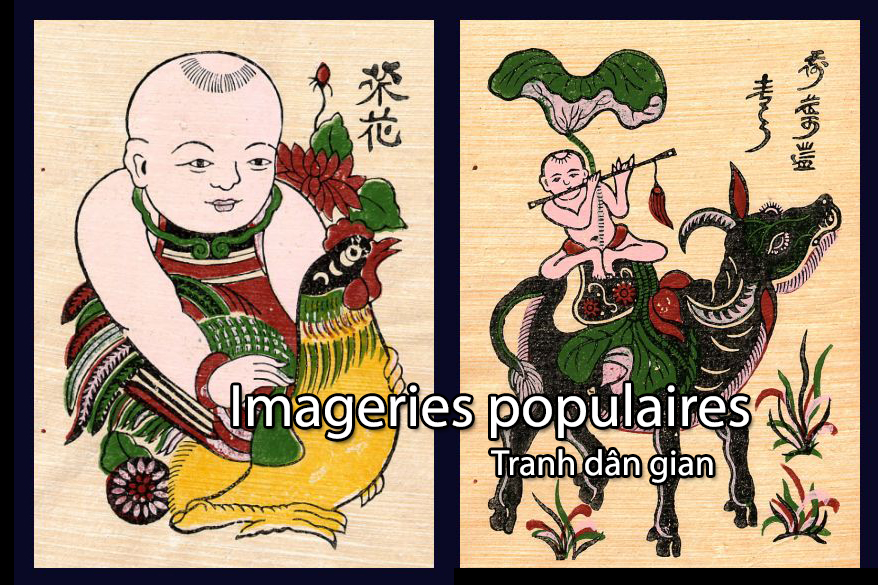Imageries populaires Đông Hồ
Các bức tranh dân gian phổ biến nầy thường được trông thấy trưng bày ở các ki-ốt dành riêng cho các khách du lịch nước ngoài. Giấy dó (giấy rhamnomeuron) được sử dụng để in những hình ảnh này. Theo một số nhà nghiên cứu Việt Nam, giấy này được xuất hiện vào khoảng thế kỷ thứ 3 và đạt đến đỉnh cao từ thế kỷ thứ 8 đến thế kỷ 14. Hồ Qúi Ly đã sử dụng nó vào cuối thế kỷ 14 để in các tiền tệ pháp định.
Việc sản xuất giấy này đòi hỏi phải có sự chuẩn bị thật kỹ lưỡng. Giấy được làm bằng vỏ cây dó. Sau khi thu hoạch vào khoảng tháng 8 đến tháng 10 âm lịch, cần ngâm vỏ cây trong nước một hoặc hai ngày. Sau đó mới được xử lý bằng cách ngâm nó trong dung dịch vôi cô đặc trong 5 giờ. Sau đó mới đun sôi nó trong khoảng 20 giờ trước khi đem giã nó trong 5 giờ. Bột thu được bằng cách giã được pha loãng trong một chậu chứa đầy hỗn hợp nước và nhựa từ cây mò (clerodendron). Giấy thu được bằng cách sử dụng khuôn sau khi ép và sấy khô nó.
Cứ một trăm kí lô vỏ cây, chỉ thu được 5 hoặc 6 kg giấy. Điều này giải thích tại sao thị trường bán giấy nầy rất bị hạn chế. Ngoài ra, giấy dó Việt Nam chỉ mọc ở vùng cao miền Bắc. Nổi tiếng với nghề in vẽ hình trên giấy dó, dân làng Dương Ô và Đông Hồ cũng chịu cùng chung số phận. Giá vốn sản xuất giấy được tái chế lại cao hơn so với giá bán giấy dó. Đây chính là lý do khiến ít người tiếp tục quan tâm đến nghề truyền thống nầy đang bị thất lạc đi qua năm tháng.
Les imageries populaires fréquemment visibles sont proposées dans les kiosques réservés aux touristes étrangers. Le papier dó (papier de rhamnomeuron) est utilisé dans l’impression de ces imageries. Selon certains chercheurs vietnamiens, ce papier fut apparu vers le IIIème siècle et connut son apogée du VIIIème au XIVème siècle. Hồ Qúi Ly s’en servit à la fin du XIVème siècle pour l’impression des monnaies fiduciaires.
La production de ce papier nécessite une préparation minutieuse. Il est fabriqué avec l’écorce de l’arbre do. Après la récolte de celle-ci entre les 8ème et 10ème mois lunaires, on a besoin de l’immerger dans l’eau pendant un ou deux jours. On la traite ensuite en la macérant dans une solution de chaux condensée durant 5 heures. Puis on la fait bouillir durant une vingtaine d’heures avant de la piler pendant 5 heures. La farine obtenue par le pilage est diluée dans une bassine remplie d’un mélange d’eau et de résine de la plante mò ( clerodendron ). Le papier est obtenu grâce à un moule après avoir été pressé et séché.
ce papier nécessite une préparation minutieuse. Il est fabriqué avec l’écorce de l’arbre do. Après la récolte de celle-ci entre les 8ème et 10ème mois lunaires, on a besoin de l’immerger dans l’eau pendant un ou deux jours. On la traite ensuite en la macérant dans une solution de chaux condensée durant 5 heures. Puis on la fait bouillir durant une vingtaine d’heures avant de la piler pendant 5 heures. La farine obtenue par le pilage est diluée dans une bassine remplie d’un mélange d’eau et de résine de la plante mò ( clerodendron ). Le papier est obtenu grâce à un moule après avoir été pressé et séché.
Papyrus vietnamien
Galerie des photos
Pour cent kilos d’écorce, on obtient seulement 5 ou 6 kilos de papier. Cela explique la raison pour laquelle le marché est très limité. De plus le papyrus vietnamien dó ne pousse que dans les hautes régions au Nord. Connus pour la fabrication des imageries populaires sur le papier dó, les villageois de Dương Ô et de Ðông Hồ ont subi le même sort. Le prix de revient dans la production du papier recyclé est supérieur à celui de vente du papier dó. C’est pourquoi peu de gens continuent à s’intéresser encore à ce métier ancestral qui se perd au fil des années.
Those are often proposed in the kiosks reserved to foreign tourists. Paper dó (rhamnomeuron paper) is used in the printing of these images. According to certain Vietnamese researchers, this paper had appeared around the 3rd century and knews its apogee from the 8th to the 14th century. Hồ Qúi Ly made use of it at the end of 14th century for the printing of fiduciary currencies. The production of this paper requires a meticulous preparation.
It is manufactured with the bark of the tree dó. After the harvest of this one between the 8th and 10th lunar months, one needs to immerse it in water during one or two days. After one treats it by macerating it in a lime solution condensed during 5 hours. Then one makes it by boiling during about twenty hours before crushing it during 5 hours. The flour obtained by crushing is diluted in a basin filled with a mixture of water and resin of the plant mò (clerodendron). Paper is obtained thanks to a mould after being pressed and dried.
For two hundred kilos of bark, one gets only 5 or 6 kilos of paper. That explains why the market is very limited. In addition, the Vietnamese papyrus dó grows only in the northern highlands. Known for making popular imagery on paper dó, villagers of Dương Ô and Đông Hồ suffered the same fate. The cost price in the production of recycled paper is higher than the selling price of dó paper. That is why a few people still continue to be interesting to this ancient craft that is lost over the years.

